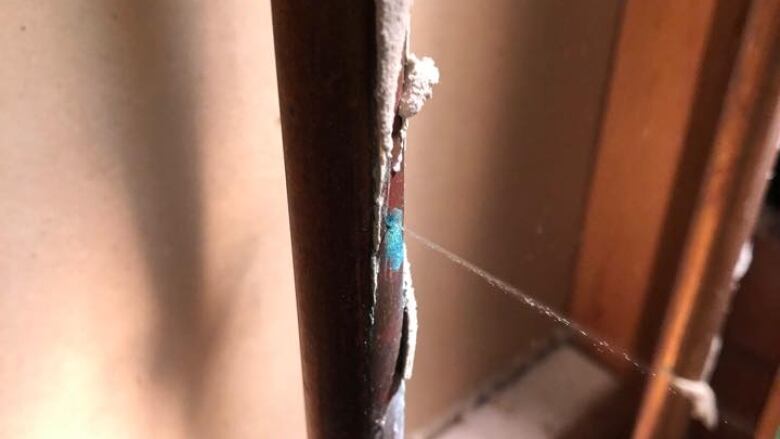Two water systems in U.S. develop pinhole leaks similar to those in Thunder Bay, Ont.

Pinhole water leaks found in copper water pipes in Thunder Bay, Ont., are not unique to the city.
Earlier this year, officials in Folsom, Calif. received over 1,000 complaints about the leaks springing up in homes across their city.
The City of Folsomundertook a study with a consultant, including Virginia Tech university, which included field work, and analyzing copper pipes taken from homes that sprung a leak.
Marcus Yasutake, the environmental and water resources director with the City of Folsom, said the main reason for pinhole leaks in the California city, is the alkalinity of the water.
"pH would be the top one. So, when the pH gets above nine, which is what happens here at the city, that could lead to potential pitting."
Yasutake said Folsom did not make any changes to its water, by adding new chemicals, or by changing the turbidity or amount of dissolved solids found in the drinking water.
All of the leaks found were inside homes or buildings he said, as Folsom has its water meters installed outside of buildings. Up to the water meter, PVC pipe is often used, and frost is not a concern, he said.
The treated water has low levels of alkalinity, calcium, total dissolved solids and low turbidity, along with chlorine being used for disinfection, which when combined, was causing issues for copper pipes.
Yasutake said type 'M' copper pipes seemed to be impacted more than others.
"What they recommended at that time was that the city add orthophosphate to its treatment systems, anddosing that at very minor increments, which is what we are currently doing," Yasutake said, noting the city is still dosing out the orthophosphateat 0.3 parts per million.
That level was gradually increased over the past three weeks, and will remain in place for some time.
"That is to provide an internal coating, or lining of the pipe, of the copper pipes specifically in this case," he said.
"The number of incidents started to increase, and that turned into, this is starting to get a little more widespread in terms of numbers, as well as area within the city," he said, noting the city realized it had an issue on its hands when the issue was not confined to just a few geographic areas.
Most of the homes impacted were built in the 1970s, 1980s, 1990s and early 2000s he said.
Other water utility
Another water provider in the U.S., the Washington Suburban Sanitary Commission, or WSSC water, also had a number of customers with pinhole leaks in the early 2000s.
Chuck Brown, the spokesperson for WSSC water, said the pinhole leak issue in his utility, which serves 464,000 customers, was first recognized in the late 1990s.
Between 5,000 and 6,000 customers were impacted, almost all of which were residential. Many of the residences were built in the 1920s, and had copper water lines.
After undertaking a study, once again with Virginia Tech, the best determination they could find for the pinhole leaks was changes in water quality, which led to less organic material in WSSC's treated water.
The change in the water led to fewer materials inadvertently coating copper pipes.
The solution, Brown said, was to add orthophosphate to the water supply in 2003, which is still continuing in 2020.












_(720p).jpg)


 OFFICIAL HD MUSIC VIDEO.jpg)
.jpg)



























































































